 Built in London for the Greeks, Karteria was possibly the most modern warship in the world when it entered service in 1826. She was ordered, part financed and captained by retired Royal Navy officer, Captain Frank Abney Hastings.
Built in London for the Greeks, Karteria was possibly the most modern warship in the world when it entered service in 1826. She was ordered, part financed and captained by retired Royal Navy officer, Captain Frank Abney Hastings.At the age of 11, Hastings had taken part at the Battle of Trafalgar on HMS Neptune. He rose to commander until 1820 when due to an incident with a senior officer he was
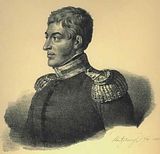 compelled to leave the service. A great philhellene, in 1822 he went to Greece to serve on Tombazis’s ship "Themistoklis". In 1824, he managed to secure £10,000 of the £2,000,000 of the second Greek loan from England, to finance Karteria; he paid for her guns himself. A year later, he was appointed commander-in-chief of the Greek revolutionary navy.
compelled to leave the service. A great philhellene, in 1822 he went to Greece to serve on Tombazis’s ship "Themistoklis". In 1824, he managed to secure £10,000 of the £2,000,000 of the second Greek loan from England, to finance Karteria; he paid for her guns himself. A year later, he was appointed commander-in-chief of the Greek revolutionary navy.Karteria was classified as a four-masted sloop-of-war that operated under sail while travelling, but could be propelled by steam-powered paddles in battle. Captained by Hastings, armed with 68-pounder guns and equipped with on-board furnaces to provide red-hot incendiary shots, Karteria was deadly against the older wood and sail ships of the Ottoman navy. In 1827 alone, she fired 18,000 rounds and sank several enemy ships.
Karteria is most notable for being the first steam warship in the world to be used in battle (the first steam warship built was the American USS Demologos from 1814). Apart from Karteria, five more steam warships were ordered. Two of them, "Epiheirisis" and "Ermis" entered Greek service before the war was over, one blew up during trials and two were never completed and were left to rot on the Thames.
Hastings is buried in Poros and his heart is immured at the Anglican church of St. Paul in Athens.
Maurice Abney-Hastings, antecedent of Hastings, provides an excellent relevant article by Dimitri G. Capaitzis in his website (www.captainfrank.co.uk). The two quotes below are taken from there:
____________
Materials used for construction are described by Hastings, in his Memoir of 1828:
The ‘Karteria’ was built with her timbers close and caulked together, and would therefore, have floated without planking. I had several opportunities of remarking the advantage of building thus, to resist shot; nothing less than a eighteen pounder ever came through us; this, ’tis true, might be partly attributed to Turkish bad powder, but those shot that did come through, always made a nice clean round hole without a splinter. However, against shells it would have a disadvantage, as they would be more likely to stick in it. Perhaps if shells became generally used, it will be proper to make the upper works of a ship as slight as is consistent with strength, and iron ribs might perhaps be good. The ‘Karteria’ had another peculiarity in her build – two solid bulkheads enclosing the engine room, and caulked and lined, so as to be water tight, the intention of this was, in the event of one part of the ship being leaky from any cause whatever, the water could not flow into another part of the ship. This arrangement, which is due to the ingenuity of Mr Brent, the builder, once saved this ship from fire, which broke out with great force in the after-part of the engine room, and would have communicated to the shell room very quickly. But for this bulkhead, which kept the fire forward, and gave us time to subdue it. I see no reason why all men of war should not be furnished with similar partitions. The same builder saved another ship (the Rising Star) from sinking, by this contrivance.
Samuel Gridley Howe, the ‘Karteria’ American doctor had recorded in his November, 1826 journal:
We have two Englishmen (officers), one German, one Frenchman, and one Greek; The Greek is the eldest son of Tombazi, Captain Hastings is a man who deserves the deepest gratitude and respect from the Greek nation. It is only through his exertion, his activity, and generosity, that this ship was ever got out. She was built under his own eye in London, and carries as much weight of metal as a thirty-six gun frigate; her engine, however, is not the best. Captain Hastings, having on board about forty English and forty Greek sailors, is all ready to join the Greek fleet and engage the enemy.
__________________
Operational History
1825 - Laid down at Daniel Brent's Greenland South Dockyard, Rotherhithe, London, for the Revolutionary Greek navy. The order was financed by the London Philhellenic Committee. May 1826 - Completed.
May 1826 - Completed.
September 1826 - Reaches Nafplion.
January 1827 - Sails to Phaliron and sees action in both sea and land engagements. She is accompanied by three brigs and five gunboats.
February 1827 - Sails to Oropos and attacks enemy coastal defences and ships, together with Papanikolis' "Nelson" and Miaoulis' frigate "Hellas". Two transports loaded with equipment and supplies are captured and taken to Poros.
March 1827 - Cochrane takes over as commander of the Greek navy and orders Karteria to lead operations off Volos, together with schooner "Themistoklis", brigs "Aris" and "Panagia" and sloop "Aspasia". Shore defences are destroyed, five loaded transports are captured, two are destroyed and one runs aground. At nearby Trikeri they attack a large warship and four beached captured schooners. All are destroyed by firing from a distance.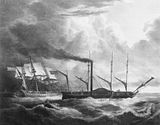 September 1827 - Karteria, Hellas, two schooners, twelve brig and three gunships proceed to Vasiladhi and Mesolonghi to take part in the Greek land offensive. They have limited success and the fleet is split.
September 1827 - Karteria, Hellas, two schooners, twelve brig and three gunships proceed to Vasiladhi and Mesolonghi to take part in the Greek land offensive. They have limited success and the fleet is split.
29-30 September 1827 - Hastings with "Karteria", "Sauveur" and gunboats "Bavarois" and "Philhelleic" pass into 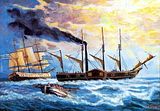 the Gulf of Corinth and enter the Gulf of Salona, to engage one Algereen brig of 14 guns, the enemy Admiral’s 16-gun brig, three small schooners, two armed transport brigs, two large boats with guns, shore batteries and three loaded Austrian transport ships. The Admiral’s brig is set on fire, as well as one schooner and one transport brig, while the Algereen brig is abandoned. Out the nine enemy ships only two are spared. The three Austrian ships are taken as prizes. This success provokes Ibrahim Pasha
the Gulf of Corinth and enter the Gulf of Salona, to engage one Algereen brig of 14 guns, the enemy Admiral’s 16-gun brig, three small schooners, two armed transport brigs, two large boats with guns, shore batteries and three loaded Austrian transport ships. The Admiral’s brig is set on fire, as well as one schooner and one transport brig, while the Algereen brig is abandoned. Out the nine enemy ships only two are spared. The three Austrian ships are taken as prizes. This success provokes Ibrahim Pasha  into the aggressive movements that would lead to his fleet's complete destruction by allied fleet of England, France and Russia at the Battle of Navarino (20 October 1827).
into the aggressive movements that would lead to his fleet's complete destruction by allied fleet of England, France and Russia at the Battle of Navarino (20 October 1827).
25 May 1828 - Hastings is wounded in an attack at Aetoliko.
1 June 1828 - Hastings succumbs to his wounds in the Harbour of Zante. He is given a state funeral with full military honours and hailed as a great hero by the leaders of the soon to be born Greek State.
February 1830 - Following last September's Treaty of Adrianople, Britain, France and Russia recognise a free Greek State.
16 July 1831 - During one of the first civil conflicts of the new state, where the Hydriots revolt against the State, Karteria is used by the Hydriots to take position west of Galatas, Poros.
27 July 1831 - Together with Hellas, Karteria engages two Russian ships that support the Greek State.
1 August 1831 - Miaoulis sets fire on his fleet at Poros, including the frigate Hellas. Karteria and old two-masted "Emmanouil" are saved by Myconian sailor George Galasidis and another soldier, who swam to the ships and managed to cut the fuses just in time.
1841 - Karteria is officially no longer mentioned in the Greek navy's lists, although it is practically out of commission for almost a decade.
Specifications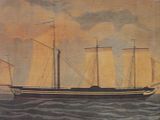 Paddle Steamer "Karteria"
Paddle Steamer "Karteria"
Displacement: 233 tons
Propulsion: two steam enginers of 85hp and four masts with schooner rigging
Consumption: 7 tons of coal per day
Speed: 7 knots
Length: 38.4m
Width: 7.6m
Armament: 4 x 68-pounder carronades and 4 x 68-pounder guns of a new design based on a model by Frank Hastings
Crew: 185 (17 officers, 22 petty officers, 32 gunners, 110 sailors and 4 cooks-cabin boys)
For Gamers and Game designers
Being the first steam warship to see action and able to fire red-hot incendiary shots from its 68-pounder guns, Karteria offered a spectacular advantage against the Ottoman navy (and possibly any other navy at the time). Also notice that she travelled under sail and the steam engines were used only in battle.
For Modellers
The first two images are of the model of Karteria by G. Vammenos, which can be seen at the Hellenic Maritime Museum, Piraeus. The third image is Karteria's model at the Hellenic Naval Academy's museum.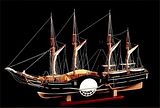
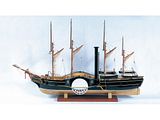
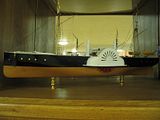
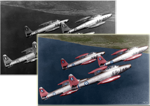
Just somewhat offtopic, i am looking for a picture of greek patrol vessel A2. It could be any from A1-A4 since it appears they were same class. They were build 1926-1927 and ended their careers in WW2.
ReplyDeleteThanks
That will be very difficult. Of course, if I ever come across such pictures you can expect an article very very quickly.
ReplyDelete